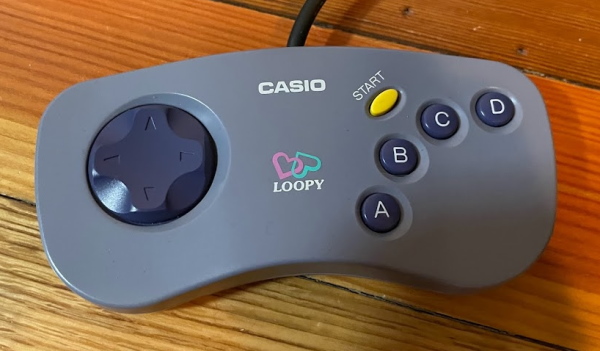-
The Power of Cross-Marketing: Teddy Boy Blues
Imagine making a game based on a song. A song of a futile love, heartbreak, and a teddy boy. Now, remember that it’s 1985, and you’re making an arcade game. (For the Sega System 1, as this is just the Sega System 1 blog now) Would you come up with a boy with a tiny grease gun that can shrink your foes rather than pump them full of lead running through a series of non-Euclidean mazes? …you wouldn’t? Well, thankfully, Ishii Youji did.
-
The Memories of Z80 Past: Zaxxon and Future Spy
The Sega System 1 was not Sega’s first arcade board system; of course, they had been releasing arcade games since the 1970’s. Of course, once one moves before 1983, things get more complicated thanks to the Sega/Gremlin split, and the lack of parts standardization pre-JAMMA, but we can probably handle a year or so before. But first, an irrelevant digression.
-
Loopy 2: The Accessorizing
Remember the Casio Loopy? It’s a game console whose target audience is very much not me, which was designed to allow preteen girls to make stickers. But while we all know little girls love stickers, what else do they love? And if you didn’t say “game console add-ons”, well, you can kiss that dream job at Casio good-bye, because that’s what we’ve got from them today.
-
Fun With 3 Colors: The Vectrex 3-D Imager!
Oh gosh, I never thought I would get the chance to talk about this– this is one of the coolest devices out there in my book. It’s got everything; vector graphics, colors from a monochrome image, motors, CRTs, failed add-ons for a flopped console, and it’s impossible to screenshot. How do you make a black-and-white screen color?
-
Isn't she just Misunderstood? The Casio Loopy!
Imagine asking Julius Caesar to review the arcade game Galaga. He lacks the knowledge of space that even children have today, and certainly can’t recognize a spaceship; he keeps going on about how using arrows against bugs is a waste of a perfectly good arrow. Even the high score concept is foreign to a man who doesn’t know about the modern arabic numerals, and anyway, he gets way too interested when you happen to mention a CRT monitor’s discharge could kill a man. Would you really learn anything useful about Galaga from his review? And what is the point of this thought? Nothing, totally irrelevant. Let’s talk about the Casio Loopy!
-
The Pioneer PX-V7 part 2: Laserdiscs!
The system I constantly come back to here is the Pioneer LaserActive, which overlaid either NEC PC Engine/TurboGrafx or Sega Genesis CD graphics on top of analog LaserDisc video. But the LaserDisc as a format dates back to the 1970s; there was nothing stopping this from happening much earlier. After all, the Pioneer PX-V7 MSX computer was made to overlay video and it dates back to 1984. And so now we see, the LaserDisc gaming existed too. BONUS: Things break!
-
Fun with Linedrawing: The GCE/Milton-Bradley Vectrex and the PiTrex
We’ve talked about interlacing video, and that introduced the fundamental concept of “raster” graphics: a beam that moves across the screen in horizontal lines, and is modulated to create brighter or darker areas. But a cathode ray tube can actually draw lines at pretty much any angle; the raster is just a convenient pattern, but in theory you could draw any vector. And you better get that that’s been taken advantage of. Let’s take a look at the only vector-based home console, and what modern hackers have done with it.

